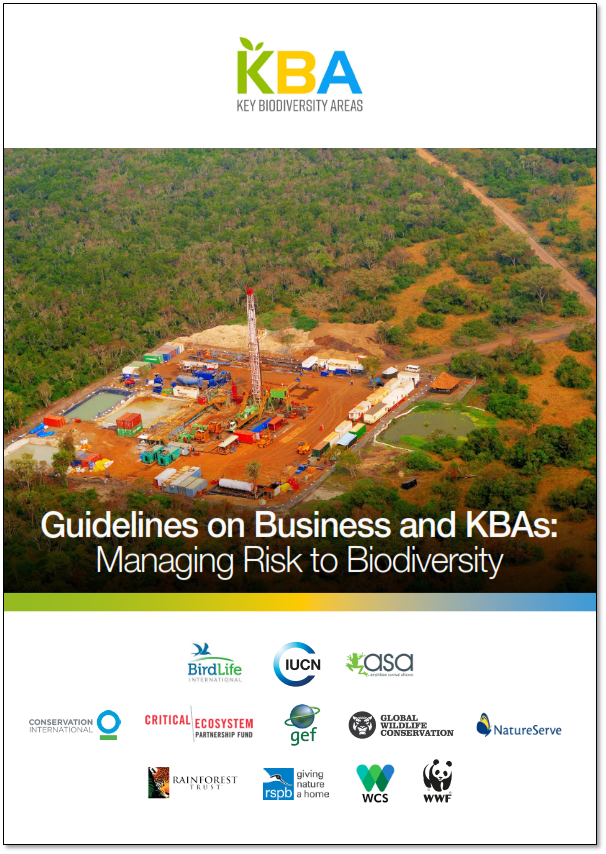A. Plumptre, KBA
Private Sector use of KBAs
Private sector activities, such as the construction and operation of infrastructure, mining, agriculture, forestry, or transport, can have direct or indirect impact on KBAs and their biodiversity. Hundreds of KBAs are already experiencing high pressures from a wide range of activities by private-sector operators. Private-sector actors can also have important roles as catalysers of sustainable development in and around KBAs and can support conservation and management activities at these sites.
A growing number of multilateral financing institutions have adopted environmental safeguards to manage the biodiversity risks associated with their investments, which may impact specific KBAs. Among these, the International Finance Corporation's Performance Standards on Environmental and Social Sustainability (2012), now adopted by the 84 Equator Principles Financial Institutions, and the World Bank Environmental and Social Framework (2016), have become globally recognised standards in dealing with environmental and social risk management. Both of these standards introduce the concept of critical habitats, the definition of which has significant overlap with KBAs. A number of regional development banks have also introduced similar environmental and social standards that can apply to KBAs.
With the signing of the Global Biodiversity Framework companies are being asked to disclose their impacts on biodiversity (Target 15). KBAs are being incorporated in a variety of disclosure metrics, notably the Taskforce on Nature-related Financial Disclosures (TNFD), Science Based Targets Network (SBTN) and the Global Reporting Initiative (GRI). KBAs are also recognised in the EU Sustainable Finance Taxonomy. For a summary on how KBAs are being used by the private sector a short document has been produced and is available in English, Portuguese, Spanish and French.
Information about KBAs is provided to companies through the Integrated Biodiversity Assessment Tool (IBAT) together with data from the Protected Planet database and the IUCN Red List of Threatened Species. IBAT integrates these data into a format that is relevant and useful for businesses and financial institutions, providing various tailored reports such as PS6, ESS6 and TNFD reports.
To help companies manage their risk and minimize impacts on biodiversity, the Guidelines on Business and KBAs provide a roadmap for companies operating in or near KBAs .
